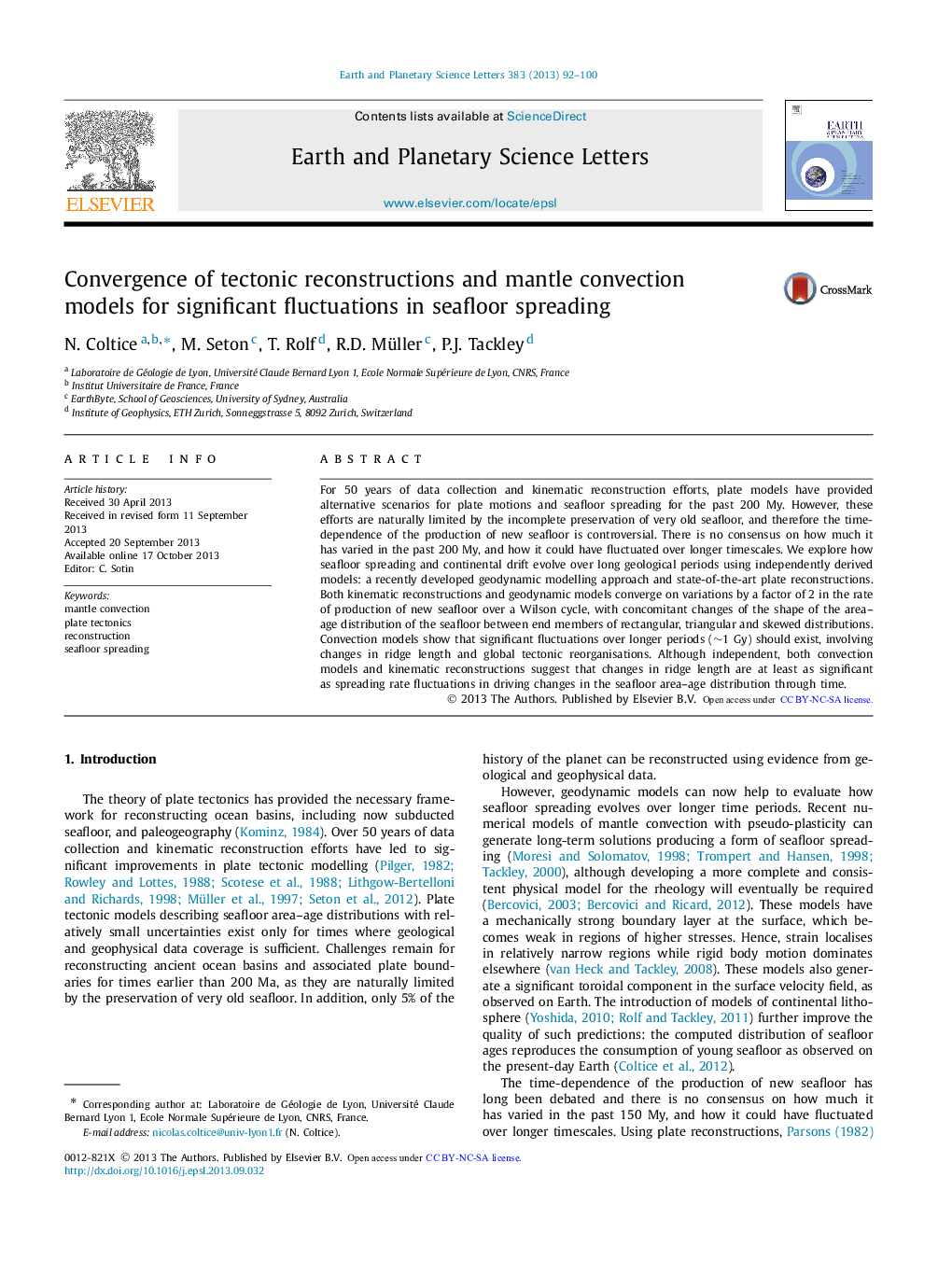| Article ID | Journal | Published Year | Pages | File Type |
|---|---|---|---|---|
| 6429849 | Earth and Planetary Science Letters | 2013 | 9 Pages |
â¢Convection models and with plate reconstructions display converging seafloor spreading evolutions.â¢Seafloor production varies by a factor of 2 over a Wilson cycle.â¢The shape of the age-area distribution of the seafloor changes with time.â¢Ridge length changes significantly contribute to seafloor spreading fluctuations.
For 50 years of data collection and kinematic reconstruction efforts, plate models have provided alternative scenarios for plate motions and seafloor spreading for the past 200 My. However, these efforts are naturally limited by the incomplete preservation of very old seafloor, and therefore the time-dependence of the production of new seafloor is controversial. There is no consensus on how much it has varied in the past 200 My, and how it could have fluctuated over longer timescales. We explore how seafloor spreading and continental drift evolve over long geological periods using independently derived models: a recently developed geodynamic modelling approach and state-of-the-art plate reconstructions. Both kinematic reconstructions and geodynamic models converge on variations by a factor of 2 in the rate of production of new seafloor over a Wilson cycle, with concomitant changes of the shape of the area-age distribution of the seafloor between end members of rectangular, triangular and skewed distributions. Convection models show that significant fluctuations over longer periods (â¼1 Gy) should exist, involving changes in ridge length and global tectonic reorganisations. Although independent, both convection models and kinematic reconstructions suggest that changes in ridge length are at least as significant as spreading rate fluctuations in driving changes in the seafloor area-age distribution through time.
